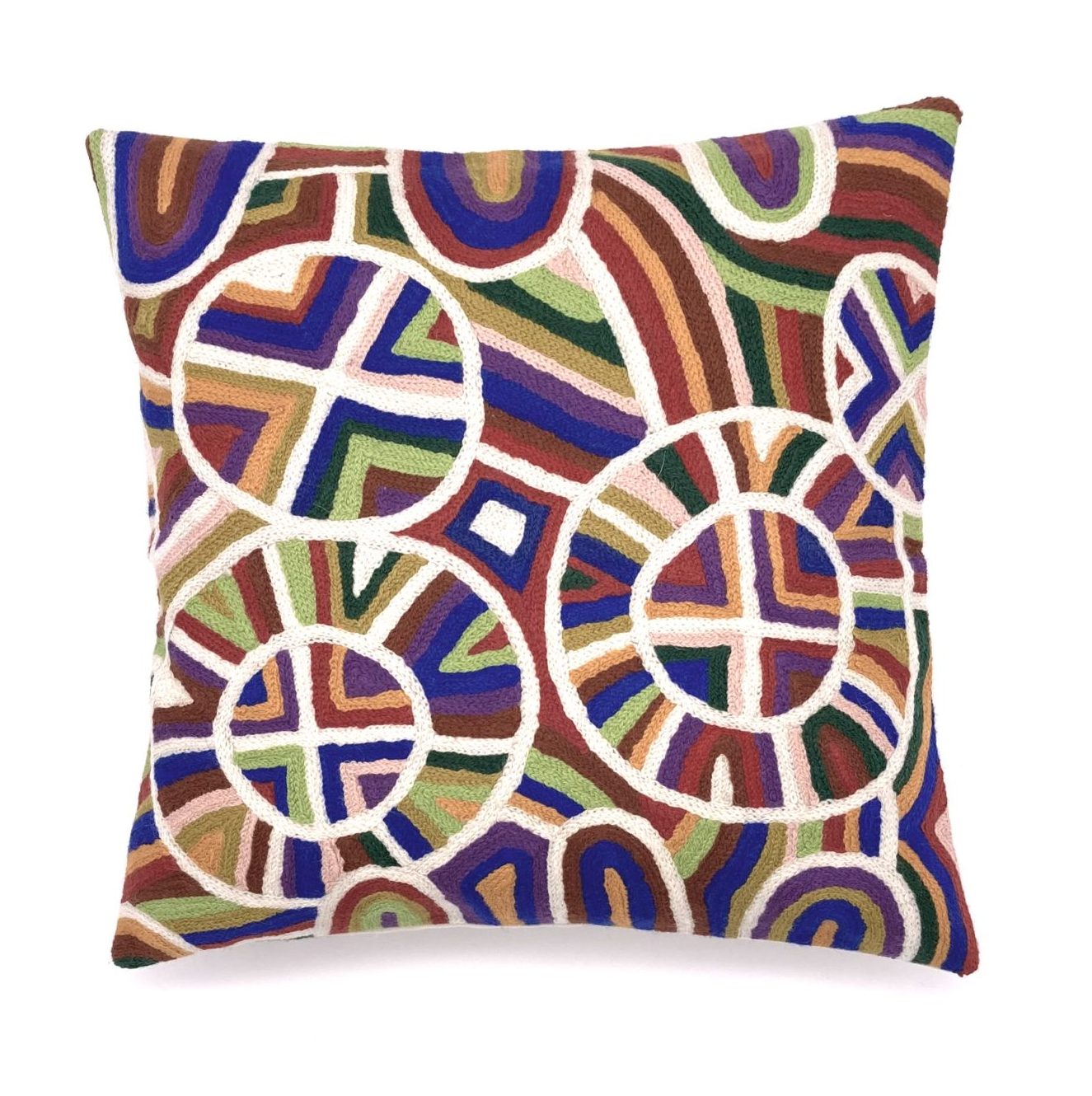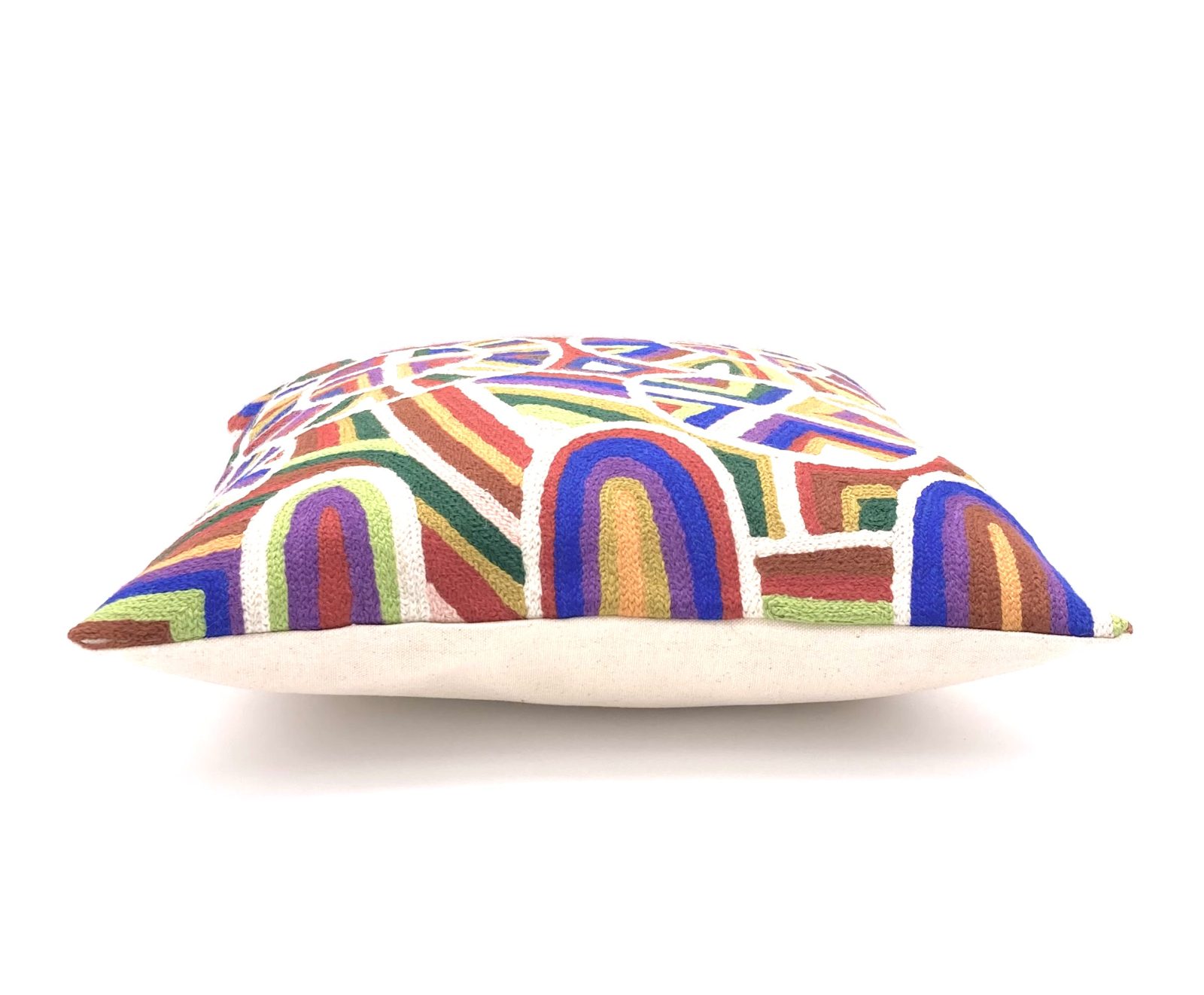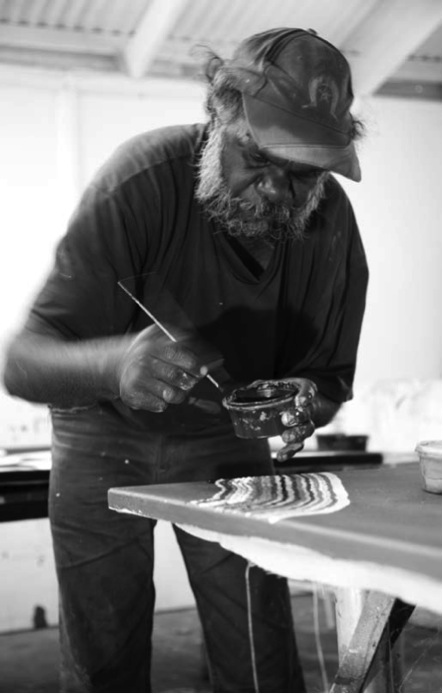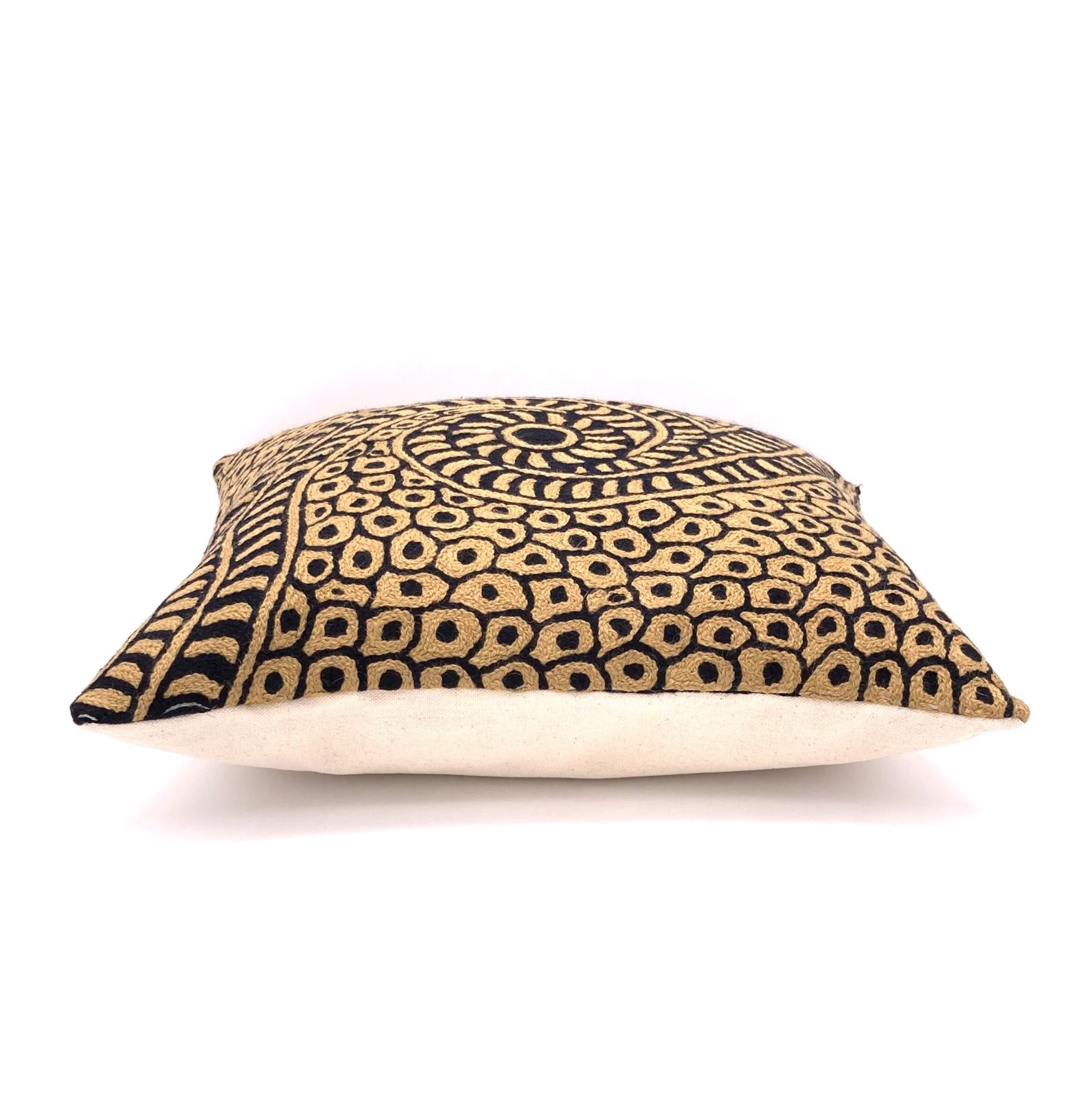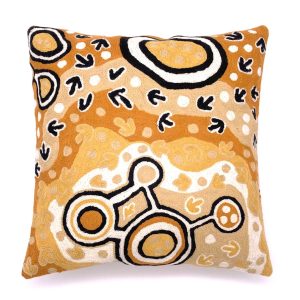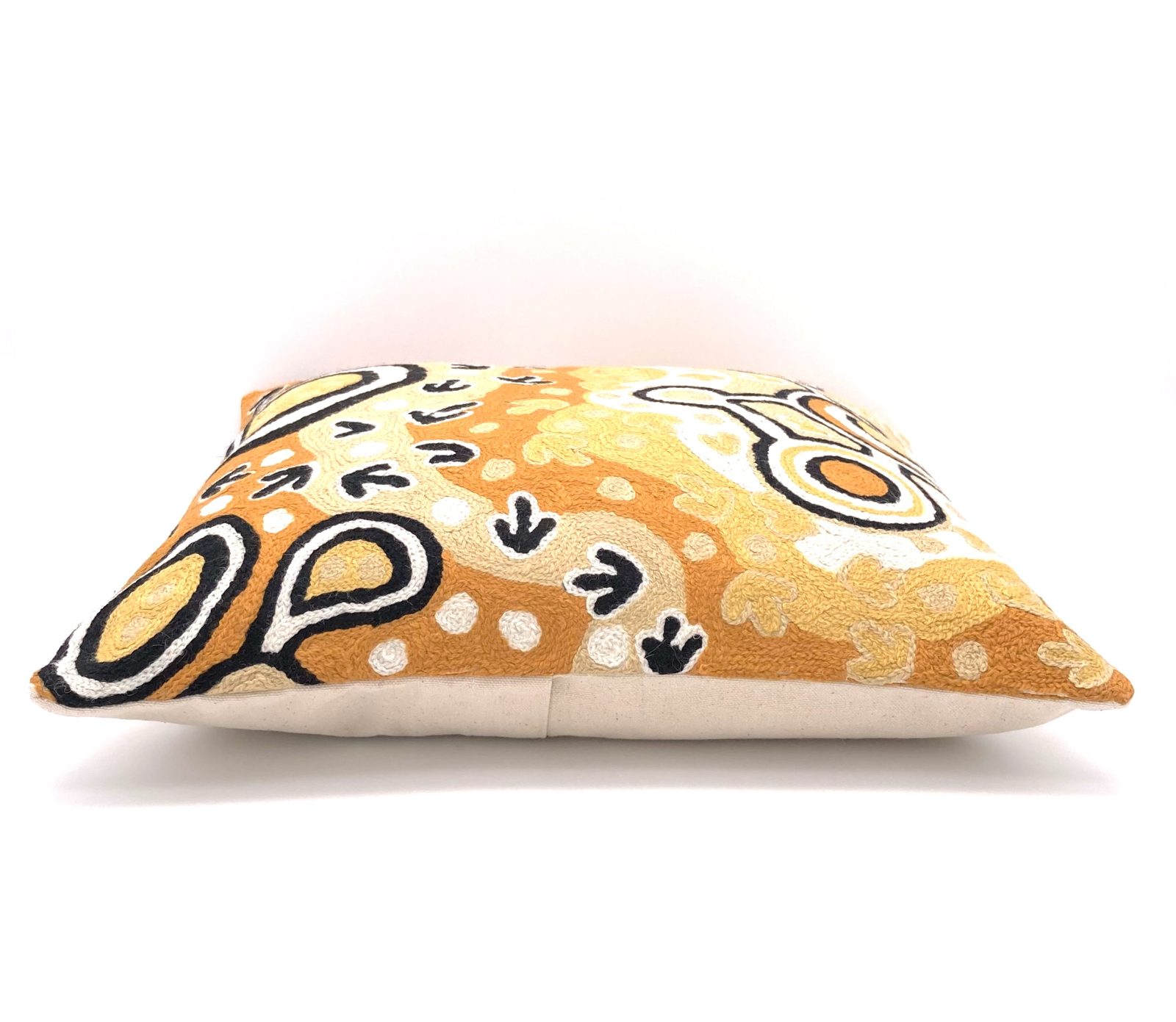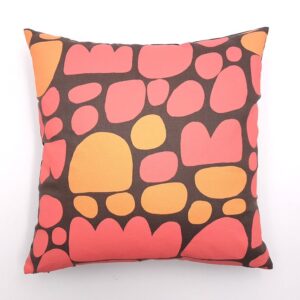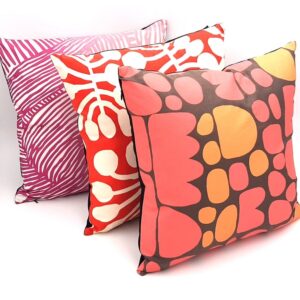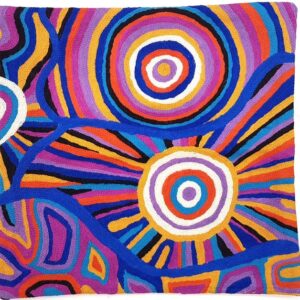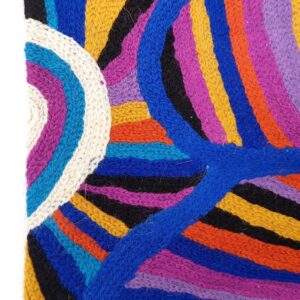Description
Size: 40 cm x 40 cm (16 x 16 inches)
Fabric: wool (front) and cotton (back)
Color: the photo is colour accurate
About the artist
Samuel Miller was born in 1966 at Ernabella Mission. When Samuel’s mother passed away, his father’s second wife, Molly Nampitjin Miller, cared for him. Molly is a founding director of Ninuku. When growing up, Samuel moved between Amata and Pipalyatjara, but he now resides in Kalka with Molly and the rest of her family. A committed artist, Samuel usually paints every day. His paintings depict the traditional iconography of his land, which lies to the east of Pipalyatjara – rock holes, creeks and hills feature in his work, all immersed in Tjukurpa (Dreaming stories). Samuel’s paintings are mesmerising. His composition is minimalist and he makes extensive use of radiating colours, which are largely drawn from the varying colours in the landscape surrounding his country. He is fastidious in his approach and works with a large number of paint colours, which he spreads out around him as he paints. Although he is one of the younger men painting at the art centre, Samuel is confident and focused in his approach.
*
About the design: Ngayaku Ngura (Country/home belonging to me)
Ngayuku Ngura means ‘My Place’. Samuel uses an extensive palette of colours to paint the country surrounding Kalka and Pipalyatjara. His paintings feature the various land formations from that area – rockholes, creeks and hills. His land includes a sacred men’s rockhole, so sacred that the name is not allowed to be written down or spoken about.
About the BWA chainstitch (gabba) kilim products
These beautiful, unique textiles are a cross-cultural collaboration combining Aboriginal designs and traditional Kashmiri rug-making techniques. Chain stitched, using hand dyed wool, each is a completely handmade piece. A more empowering way to work, this brings many direct benefits to the artists’ and their community. Control and ownership of intellectual property are also maintained. Purchase of these products guarantees a direct return to the Aboriginal artist and their community.
CARE INSTRUCTIONS: These cushion covers feel great and are fabulously hardwearing – we can vouch for that.
Do not put place/use in direct sunlight or colors may fade. To clean – dry cleaning recommended. It is possible with careful hand-wash in warm water using a wool detergent. Creases can be ironed out on a wool (low) steam setting.

